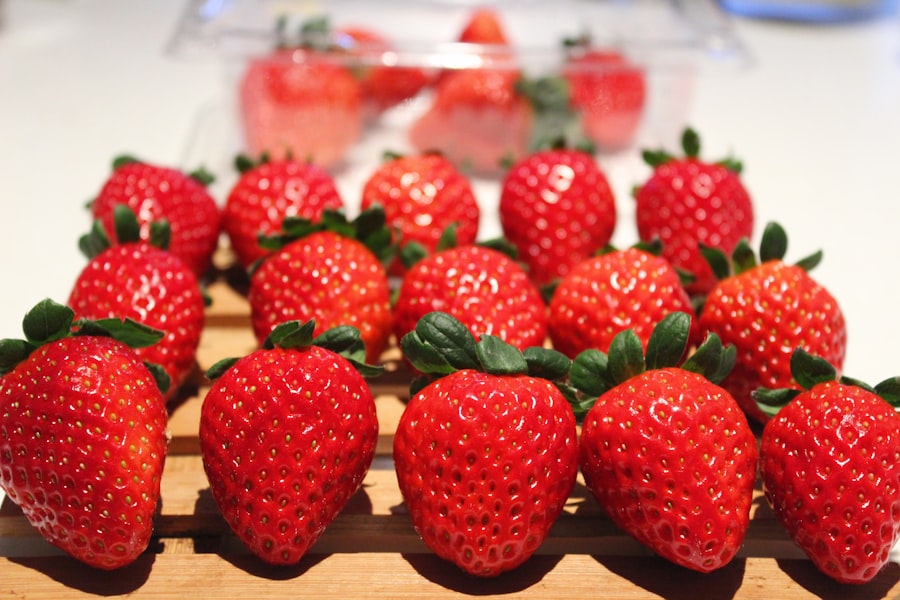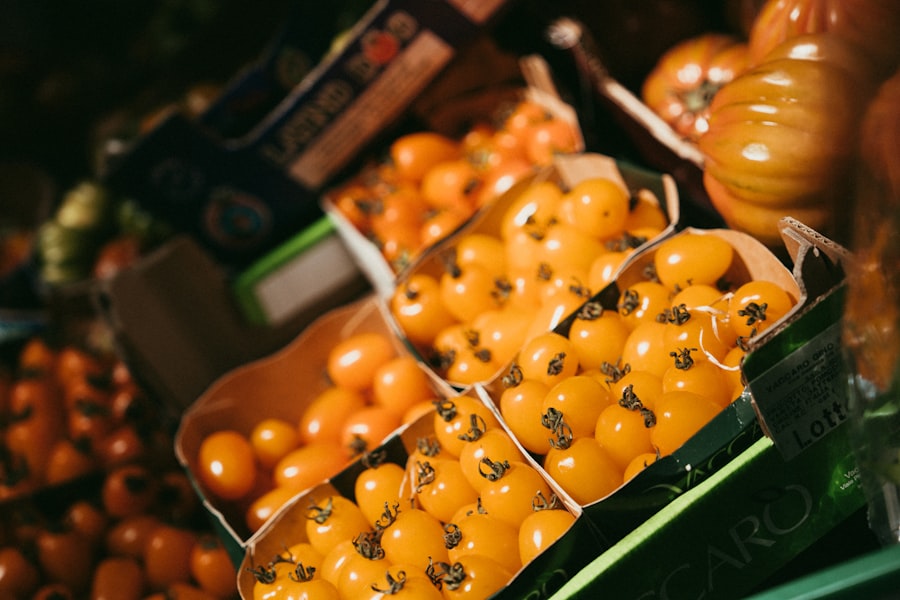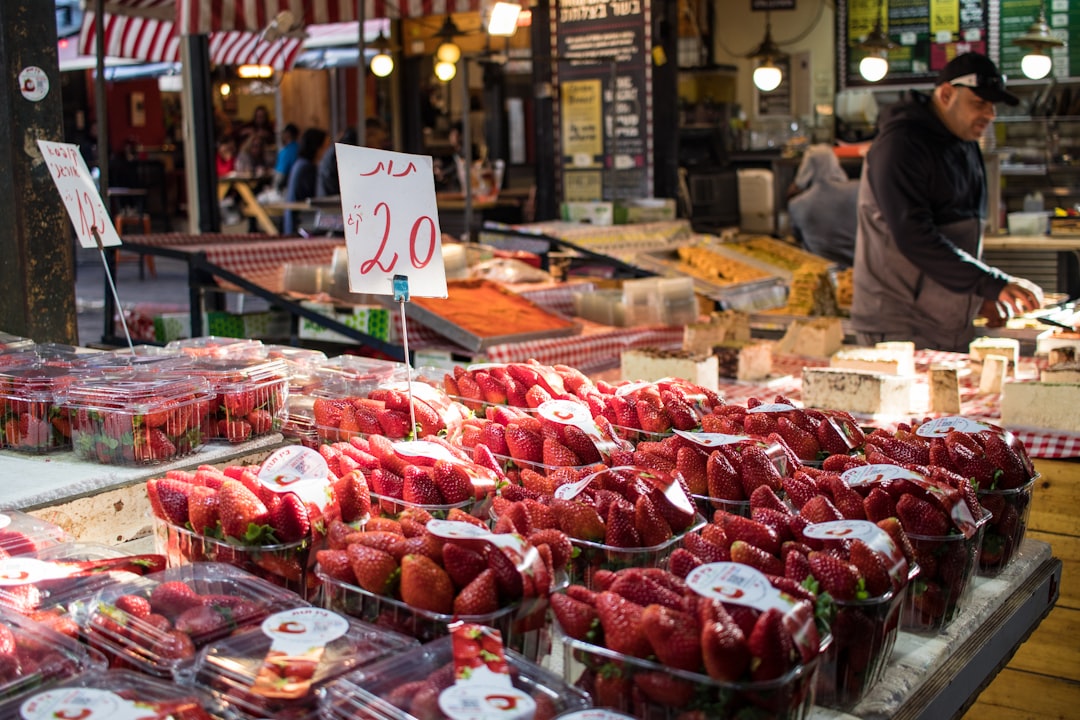Fresh produce plays a pivotal role in human health and well-being. It serves as a cornerstone of a balanced diet, providing essential vitamins, minerals, and fiber that are crucial for maintaining optimal bodily functions. The vibrant colors and diverse textures of fruits and vegetables not only make meals visually appealing but also indicate the variety of nutrients they contain.
Regular consumption of fresh produce has been linked to a reduced risk of chronic diseases such as heart disease, diabetes, and certain cancers. This underscores the importance of incorporating a wide array of fresh fruits and vegetables into daily meals. Moreover, fresh produce is not just beneficial for individual health; it also supports local economies and sustainable agricultural practices.
When consumers choose to buy locally grown fruits and vegetables, they contribute to the livelihoods of farmers in their communities. This local support fosters a sense of connection between consumers and producers, promoting a more sustainable food system. By prioritizing fresh produce, individuals can make informed choices that benefit both their health and the environment.
Key Takeaways
- Fresh produce is essential for a healthy diet and provides vital nutrients.
- The journey from farm to table affects the quality and freshness of produce.
- Pesticides and chemicals can impact both health and the environment.
- Organic produce offers benefits but understanding differences with conventional is important.
- Proper selection and storage techniques help maintain freshness and safety.
The Journey from Farm to Table
The journey of fresh produce from farm to table is a complex process that involves multiple stages, each critical to ensuring quality and safety. It begins with cultivation, where farmers carefully select seeds, prepare the soil, and nurture their crops through various growth stages. This labor-intensive process requires knowledge of agricultural practices, weather patterns, and pest management.
Once harvested, the produce must be handled with care to prevent damage and spoilage. After harvesting, fresh produce often undergoes a series of logistical challenges before reaching consumers. This includes transportation to distribution centers, where it may be sorted and packaged for retail.
The journey can involve long distances, especially for produce that is not in season locally. Each step in this supply chain is crucial; delays or improper handling can lead to diminished quality and nutritional value. Understanding this journey helps consumers appreciate the effort that goes into bringing fresh produce to their tables.
The Impact of Pesticides and Chemicals

The use of pesticides and chemicals in agriculture has sparked significant debate regarding their impact on health and the environment. While these substances are designed to protect crops from pests and diseases, concerns have arisen about their potential effects on human health. Studies have suggested that prolonged exposure to certain pesticides may be linked to various health issues, including neurological disorders and reproductive problems.
As a result, many consumers are increasingly wary of the produce they purchase, seeking out options that minimize chemical exposure. In addition to health concerns, the environmental impact of pesticide use cannot be overlooked. Chemicals can leach into soil and waterways, affecting ecosystems and biodiversity.
Pollinators such as bees are particularly vulnerable to pesticide exposure, which can disrupt their populations and threaten food production. As awareness grows about these issues, there is a rising demand for more sustainable farming practices that prioritize the health of both consumers and the planet.
The debate between organic and conventional produce often centers around perceptions of health benefits and environmental sustainability. Organic produce is grown without synthetic pesticides or fertilizers, which appeals to consumers seeking cleaner options. Many believe that organic fruits and vegetables are inherently healthier due to their lack of chemical residues.
However, research has shown that the nutritional differences between organic and conventional produce are often minimal. On the other hand, conventional farming methods can yield higher quantities of produce at lower costs, making them more accessible to a broader audience. While conventional farming may rely on chemicals, advancements in agricultural technology have led to safer practices that minimize risks.
Ultimately, the choice between organic and conventional produce depends on individual values regarding health, environmental impact, and budget considerations.
Understanding the Nutritional Value of Fresh Produce
| Fresh Produce | Calories (per 100g) | Vitamin C (mg) | Fiber (g) | Potassium (mg) | Common Nutritional Benefits |
|---|---|---|---|---|---|
| Apple | 52 | 4.6 | 2.4 | 107 | Rich in antioxidants, supports heart health |
| Banana | 89 | 8.7 | 2.6 | 358 | High in potassium, aids digestion |
| Carrot | 41 | 5.9 | 2.8 | 320 | Excellent source of beta-carotene, supports eye health |
| Spinach | 23 | 28.1 | 2.2 | 558 | High in iron and calcium, promotes bone health |
| Tomato | 18 | 13.7 | 1.2 | 237 | Rich in lycopene, supports heart health |
Fresh produce is renowned for its rich nutritional profile, offering a plethora of vitamins, minerals, antioxidants, and dietary fiber. Fruits and vegetables are low in calories yet high in essential nutrients, making them an ideal choice for those looking to maintain a healthy weight while nourishing their bodies. For instance, leafy greens like spinach are packed with iron and calcium, while citrus fruits provide a significant dose of vitamin C.
Moreover, the nutritional value of fresh produce can vary based on factors such as ripeness at harvest, storage conditions, and preparation methods. Consuming fruits and vegetables soon after harvest maximizes their nutrient content. Cooking methods also play a role; while steaming can preserve nutrients better than boiling, some nutrients are more bioavailable when cooked.
Understanding these nuances can empower consumers to make choices that enhance their overall health.
The Environmental Impact of Fresh Produce
The environmental impact of fresh produce extends beyond farming practices; it encompasses water usage, land degradation, and carbon emissions associated with transportation. Agriculture is one of the largest consumers of freshwater resources globally, raising concerns about sustainability in regions facing water scarcity. Additionally, conventional farming practices can lead to soil erosion and loss of biodiversity if not managed responsibly.
Transportation also contributes significantly to the carbon footprint of fresh produce. The longer the distance traveled from farm to table, the greater the environmental toll due to fuel consumption and greenhouse gas emissions. Consumers can mitigate this impact by choosing locally sourced produce whenever possible.
Supporting local farmers not only reduces transportation emissions but also promotes sustainable agricultural practices that benefit the environment.
Uncovering the Hidden Costs of Fresh Produce

While fresh produce is often perceived as a healthy choice, it is essential to consider the hidden costs associated with its production and consumption. These costs can include environmental degradation from unsustainable farming practices, health implications from pesticide exposure, and economic disparities faced by small-scale farmers. For instance, large agribusinesses may dominate the market, pushing smaller farms out of business and leading to a loss of agricultural diversity.
Additionally, food waste is a significant hidden cost in the fresh produce supply chain. A substantial portion of fruits and vegetables is discarded due to cosmetic imperfections or spoilage during transportation and storage. This waste not only represents lost resources but also contributes to greenhouse gas emissions when decomposing in landfills.
By being mindful of these hidden costs, consumers can make more informed choices that support sustainable practices.
The Role of Seasonality in Fresh Produce
Seasonality plays a crucial role in determining the availability and quality of fresh produce. Fruits and vegetables are at their peak flavor and nutritional value when harvested during their natural growing season. For example, tomatoes are typically sweetest in summer when they ripen on the vine under optimal conditions.
Conversely, out-of-season produce may be grown in greenhouses or imported from distant locations, often resulting in diminished taste and nutritional quality. Embracing seasonal eating not only enhances culinary experiences but also supports local agriculture by reducing reliance on imported goods. Seasonal produce tends to be more affordable due to lower transportation costs and higher local supply.
Additionally, consuming seasonal fruits and vegetables encourages dietary diversity as individuals explore new recipes and flavors throughout the year.
The Truth About Fresh Produce Spoilage
Fresh produce is perishable by nature, leading to concerns about spoilage that can affect both food safety and waste levels. Factors such as temperature fluctuations, humidity levels, and handling practices all influence how long fruits and vegetables remain fresh after purchase. For instance, leafy greens may wilt quickly if not stored properly in a cool environment.
Understanding spoilage can help consumers make better choices regarding storage and consumption. Many fruits release ethylene gas as they ripen, which can accelerate spoilage in nearby produce. By storing ethylene-producing fruits separately from other items in the refrigerator or pantry, individuals can extend the shelf life of their fresh produce.
Awareness of spoilage signs—such as discoloration or soft spots—can also prompt timely consumption or preservation efforts.
The Connection Between Fresh Produce and Food Safety
Food safety is an essential consideration when it comes to fresh produce consumption. Contamination can occur at various points along the supply chain—from farm practices to handling during transportation and storage—potentially leading to foodborne illnesses. Bacteria such as E.coli or Salmonella can thrive on contaminated fruits and vegetables if proper hygiene measures are not followed.
To mitigate these risks, consumers should prioritize washing all fresh produce thoroughly before consumption, even if they plan to peel it. Additionally, purchasing from reputable sources that adhere to food safety standards can further reduce the likelihood of contamination. Understanding the connection between fresh produce and food safety empowers individuals to make informed choices that protect their health.
Tips for Selecting and Storing Fresh Produce
Selecting high-quality fresh produce requires attention to detail and an understanding of what constitutes freshness. When shopping for fruits and vegetables, individuals should look for vibrant colors, firm textures, and absence of blemishes or soft spots.
Once purchased, proper storage techniques can significantly extend the shelf life of fresh produce. Refrigeration is essential for many items; however, some fruits—like bananas—should be kept at room temperature until ripe. Utilizing breathable bags or containers can help maintain humidity levels while preventing moisture buildup that leads to spoilage.
By following these tips for selection and storage, consumers can enjoy fresher produce while minimizing waste. In conclusion, fresh produce holds immense significance for individual health, environmental sustainability, and local economies. Understanding its journey from farm to table reveals the complexities involved in ensuring quality while highlighting the importance of supporting sustainable practices.
As consumers navigate choices between organic and conventional options or consider seasonal availability, they become empowered advocates for their health and the planet’s well-being through informed decisions regarding fresh produce consumption.
In exploring the hidden truths about fresh produce, it’s essential to consider how various factors influence the quality and safety of the fruits and vegetables we consume. For a deeper understanding of these issues, you can read the article on this topic at this link. It delves into the practices that can affect the freshness and nutritional value of produce, shedding light on what consumers should be aware of when shopping for their groceries.
WATCH THIS! The 100-Year Lie That Built Your Grocery Store — The Hidden Truth About “Fresh” Produce
FAQs
What does “fresh produce” typically refer to?
Fresh produce generally refers to fruits and vegetables that are sold in their natural state without being processed or preserved.
Are all fresh produce items truly fresh?
Not always. Some produce labeled as “fresh” may have been stored for extended periods or transported over long distances, which can affect freshness and nutritional value.
How can consumers identify genuinely fresh produce?
Look for vibrant color, firm texture, and a fresh aroma. Avoid items with bruises, mold, or signs of wilting.
Does washing fresh produce remove all pesticides?
Washing can reduce pesticide residues but may not eliminate all traces. Using a produce brush and rinsing under running water is recommended.
Is organic produce always safer or healthier than conventional produce?
Organic produce is grown without synthetic pesticides or fertilizers, but both organic and conventional produce offer essential nutrients. Safety and health benefits depend on various factors including farming practices and handling.
What impact does transportation have on fresh produce quality?
Long transportation times can lead to nutrient loss, spoilage, and reduced freshness due to exposure to varying temperatures and handling.
Are there hidden additives in fresh produce?
Fresh produce itself typically does not contain additives, but some pre-cut or packaged items may include preservatives or coatings to extend shelf life.
How important is seasonality in choosing fresh produce?
Seasonal produce is often fresher, more flavorful, and more nutritious because it is harvested at peak ripeness and requires less storage and transportation.
Can fresh produce carry harmful bacteria?
Yes, fresh fruits and vegetables can harbor bacteria like E. coli or Salmonella if not properly handled or washed.
What are some best practices for storing fresh produce at home?
Store produce according to type—some items do better in the refrigerator, while others should be kept at room temperature. Proper storage helps maintain freshness and reduce spoilage.
